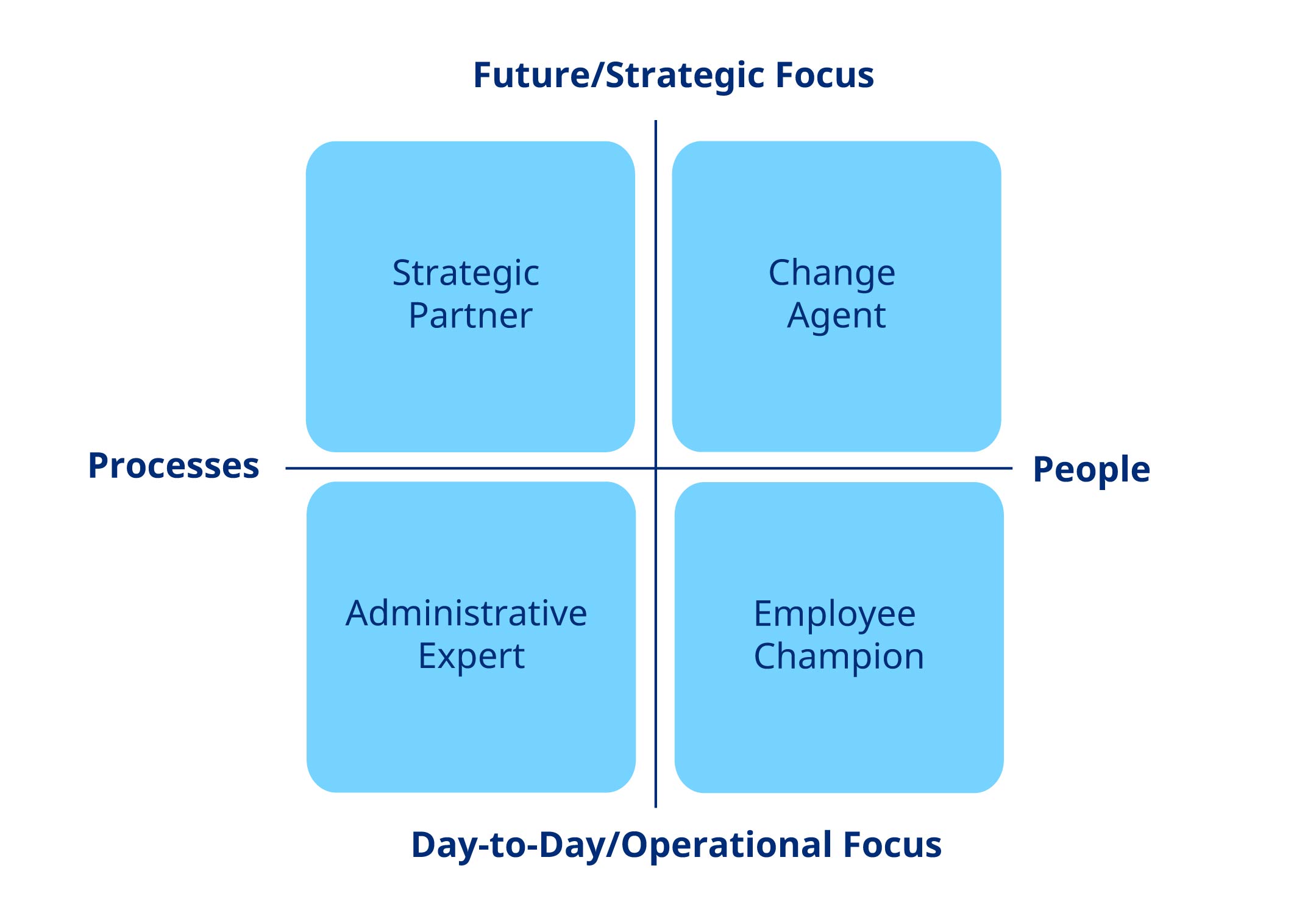The David Ulrich HR model allows businesses to streamline HR roles and responsibilities. Large organizations with huge teams can structure their working patterns and define clear roles for every team member and employee.

Strategic partner
The strategic partner in the David Ulrich model focuses on blending HR processes and initiatives with the global business strategy. This ensures that HR strategies are cognizant of business results and contribute to a customer-centric approach. This role is the central channel for internal stakeholders to communicate with the HR department.
Additionally, strategic partners play a crucial role in identifying top talent within the organization and helping fill vacant positions. Furthermore, they share HR goals with the workforce and promote a harmonious and productive workplace environment.
Change agent
The change agent supports the change and transition of a business, focusing on the human capital of the organization. When an organization is going through an expansion, evolution, or other changes, the change agent communicates these shifts internally. Therefore, this role requires deep knowledge of organizational culture to institutionalize the capacity for change effectively. It is accomplished through training individuals and empowering line managers to lead change initiatives.
The objective is to equip employees with the necessary skills to adapt to changing business goals and job roles. The change agent is crucial in preparing the entire organization for its next phase of growth.
Administrative expert
The administrative expert creates efficient and effective HR processes that are customized according to the needs of businesses in a cost-effective manner. Over time, the role of administrative experts has evolved to focus on delivering high-quality services while also minimizing costs for the organization.
These experts stay updated on changes in legislation, regulations, occupational health and safety standards, and other labor and trade laws. This knowledge enables organizations to adopt policies and regulations to ensure compliance.
Employee champion
Employee champions create a competent and committed workforce while keeping a strong emphasis on increasing human capital contribution. These professionals are knowledgeable about employee needs and how HR management can fulfill those needs.
Today, employee champions leverage digital design to enhance engagement and productivity, especially among the tech-savvy workforce. They advocate for employee interests and ensure that employees are supported during organizational changes.
Employee champions also utilize surveys to gauge employee satisfaction and identify any aspects of company culture that may affect employee productivity.









 Behavioral Competencies
Behavioral Competencies Cognitive Competencies
Cognitive Competencies Coding Competencies
Coding Competencies Domain Competencies
Domain Competencies

























Would you like to comment?